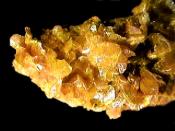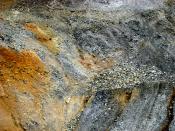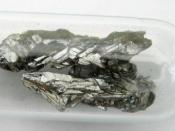History
In the 4th century B.C.E., Aristotle wrote a book called the Nature Since Antiquity, in which he makes reference to a certain element called "sandarach," which was later renamed by his student to "arhenicum." Later, Olympiodorus of Thebes obtained white arsenic through roasting arsenic sulfide. During the 13th century C.E., Albertus Magnus became the first to state the metal-like nature of arsenic. And about thirty-four years later, N. Lemery described that the metal could be obtained by heating orpiment, a yellowish mineral, with soap. It was only during the 18th century, however, that a suffiecient amount of the properties associated with the metallic arsenic allowed for it to be classified as a semimetal. The word "arsenic" was borrowed from the Persian word zarnikh meaning "yellow orpiment". Then, the word zarnikh was borrowed by the Greek, becoming arsenikon. Throughout history, arsenic has been known and used in the ancient civilizations, especially Persia.
Albeit its rather innocent discovery, arsenic was increasingly used as a poison, due to its incredible potency and discreetness. Because the symptoms of arsenic poisoning were relatively similar to those of cholera and hence often went undetected, its use became a popular murder technique, particularly amongst the ruling classes in various countries until the advent of the Marsh test, a sensitive chemical test for its presence, thus producing its nicknames, "the Poison of Kings" and "the King of Poisons". Among the people killed by arsenic poisoning are King George III of Great Britain, Napoleon Bonaparte, and American explorer Charles Francis Hall. However, arsenic was not only used for detrimental reasons. During the Bronze Age, blacksmiths often included arsenic in their bronze tools and weapons to make the alloy harder and more durable.
Sources
Arsenic is found abundantly in the Earth's crust--about one-third of element in...


